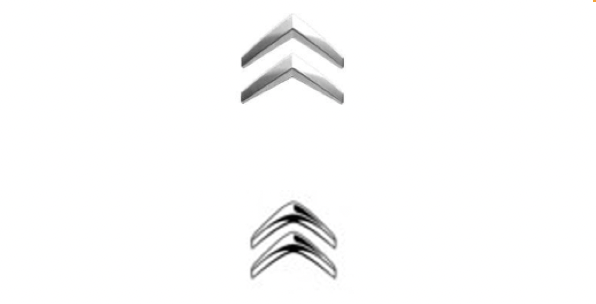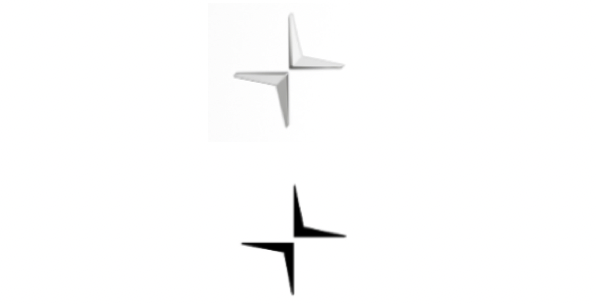(Judgment of the Paris Court of Appeal of December 14, 2021, Pôle 5 – Chamber 1, N° RG 20/12598).
The Paris Court of Appeal issued an interesting confirmatory judgement in a case in which we had the pleasure of representing Automobiles Citroën against Polestar Performance and Polestar Holding (subsidiaries of Volvo Car Group and Zhejiang Geely Holding).
Citroën’s French Trademarks

Polestar Holding AB’s Contested EU Trademarks

In the first instance, Automobiles Citroën challenged Polestar’s use of the trademarks and to designate motor vehicles, on the grounds of trademark infringement, infringement of its well-known trademarks and, in the alternative, on the ground of parasitic competition.
The Paris Court of First Instance upheld the infringement of Citroën’s reputed trademarks and ruled that they enjoyed an “exceptional” reputation.
The Court of First Instance found that Polestar’s trademarks evoke those of Citroën to the public and that “It is clear that the POLESTAR companies are taking undue advantage, both of the reputation of the CITROËN trademark, and also of its distinctiveness, and in particular of the reassuring image produced by a trademark that is both dynamic and a century old, to sell identical goods to those marketed under the reputed trademark.” (Paris Court of First Instance, Judgement of June 4, 2020, n° GD 19/08639)
In addition to condemn the Polestar companies to pay damages, the Court enjoined Polestar Performance to cease the use of the litigious signs throughout the national territory, in any form whatsoever, subject to a fine.
The Paris Court of Appeal recently upheld the first instance judgment in all its provisions and held that :
On the reputation of Citroën’s double chevron trademark:
“In this case, it has been established that since 1919, that is to say more than 100 years, all the cars of the Citroën company have borne a double chevron sign (…) It is also not disputed that Citroën devotes significant budgets to advertising its brands (more than 300,000,000 euros per year on average) and ranks third in vehicle sales in France, on which the trademarks mentioned above are affixed, so that the intensity of the use of the trademarks is established, and that, as the first courts retained the reputation of the trademarks in question, which is moreover not contested by the Polestar companies, which limit themselves to specifying that it is circumscribed by two chevrons superimposed one above the other and oriented in the same direction, is exceptionally high among the target audience of French vehicle consumers, both individuals and professionals.”
On the comparison of the goods/signs:
The goods in question are identical and the signs in question are considered to have a relatively weak visual and conceptual similarity, the phonetic comparison being impossible for figurative signs.
On the link established by the public between the signs at issue:
“As has been recalled, in the event that the conflicting signs present a certain similarity, even a weak one, an overall assessment must be carried out in order to determine whether, notwithstanding the low degree of similarity between the signs in question, there is, by reason of the presence of other relevant factors such as the important reputation of the earlier trademark, its strong distinctiveness, or the identity of the goods in question, a link between those signs in the minds of the public concerned.
In this case, it can be seen from the table reproducing the logos of the 31 automobile manufacturers whose vehicles are the most sold in France, that none uses the representation of two angular geometric shapes of the chevron type one below the other, and in particular not those of Renault and Mercedes, as alleged by the Polestar companies, the first being a diamond, the second a star within a circle. In addition, the shapes of two superimposed chevrons are perfectly arbitrary for cars, and the intrinsic distinctiveness of this sign has furthermore been greatly enhanced by the intensive use which has been made of it, so that the distinctive character of the earlier trademarks is elevated.
It has also been shown that the reputation of these trademarks is also exceptionally high, and that the goods in question are identical, namely motor vehicles.
It follows therefore from the overall assessment of the signs in question, taking into account the exceptional reputation of the two trademarks no 3422762 and no 3841054 with the public, their strong distinctive character acquired through intensive use, and the identity of the goods in question, that, notwithstanding the relatively faint similarity of the signs in this case, there is a risk that the signs in question evoke, in the target public, the trademarks cited, the aforementioned double chevrons of Citroën.
This risk, distinct from the likelihood of confusion, the demonstration of which is not required in matters of infringement of a reputed trademark, is moreover proven, as has been rightly pointed out by the first court by the production of the exhibits submitted to the proceedings of comments of Internet users, noted according to the bailiff’s report of 14 June 2019 and in particular, ‘the sketch of the Northern star, which resembles by an unfortunate coincidence the old Citroën chevrons that a joker might have separated and flipped upside down’ (Challenges); ‘The Polestar logo recalls… the Citroën chevrons’ (L’argus); ‘They recycled the Citroën chevrons!’ (Autoplus website forum); ‘Funny the logo. It looks like Citroën has burst its chevrons’ (forum of the Internet site Automobile Propre); ‘I like the Citroën chevrons of the Polestar logo’ (forum of the Le Blog Auto website); ‘You could almost see the shattered chevrons of Citroën’ (Logonews website); ‘Hopefully it’s more inspiring than the design of the Polestar logo, resembling Citroën’s chevrons like two drops of water!’ (Site Buy less Choose well); ‘The idiots! (Sic!) They recycled the Citroën chevron’ (Autoplus website forum).
The risk of a link between the implicated signs and the trademarks in question is thus established”.
On the injury to Citroën’s reputed trademarks
“Given the exceptional reputation of the Citroën double chevron trademarks in question and their strong distinctiveness acquired through intensive use sustained by extremely large advertising investments, and the fact that the conflicting signs are used to designate the same goods, namely motor vehicles, the use by the Polestar companies of the signs under investigation entails an infringement on the distinctive character by dilution and blurring of the aforesaid trademarks used in the automobile sector, the number of manufacturers of which is relatively small.
The infringement of the distinctive character of the trademarks cited, sufficient in itself to constitute an infringement of the reputed trademark within the meaning of Article L. 713-3 of the Intellectual Property Code, is thus proven.”
The appeal decision is not final and could be appealed before the Court of Cassation.
The invalidity actions initiated by Citroën against Polestar Holding’s European trademarks are currently pending before the European General Court of Justice.



